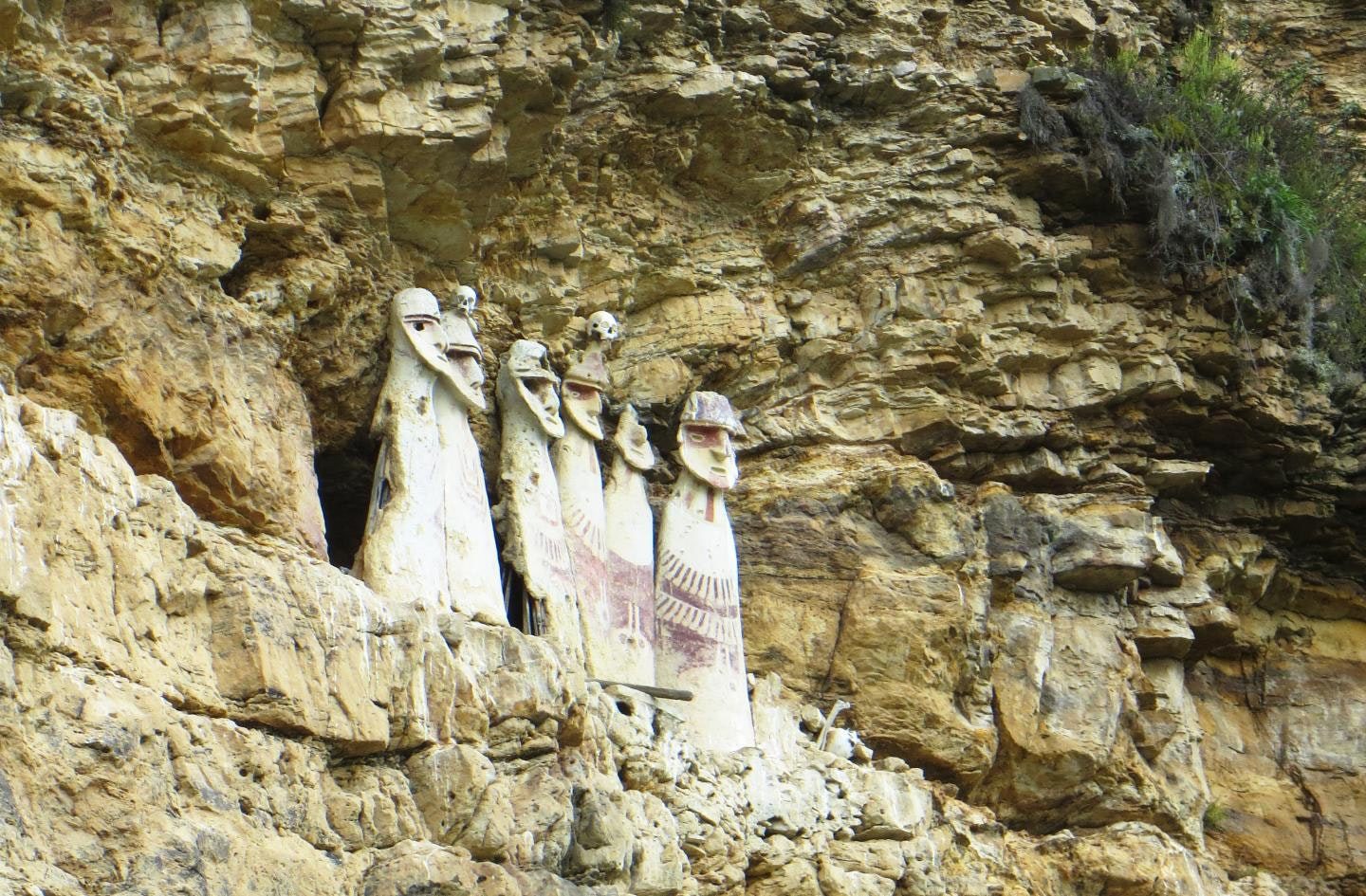
© C. BarbieriThe distinctive sarcophagi of the Chachapoya people.
A combination of linguistic analysis and genetic sequencing has revealed a hitherto unknown element of South American history - and dented the fearsome reputation of the Incas in the process.
A team led by Chiara Barbieri from the Department of Linguistic and Cultural Evolution at the Max Planck Institute for the Science of Human History in Germany set out to interrogate some unusual results turned up in a linguistic survey of native-speakers in the Chachapoyas region of northern Peru.
The participants, all elderly, spoke a variant of a tongue called Quechua - a family of pre-Columbian languages that across the Amazon and Andes regions has millions of speakers. The version used in Chachapoyas was assumed to be closely related to one used in parts of Ecuador.
However, detailed analysis showed that wasn't the case -
the Chachapoyas version was linguistically distinct. A follow-up DNA study revealed that the people in the region were to a large extent genetically distinct as well - leading to a major rethink of the accepted Inca Empire narrative.At its height, the Inca Empire was the largest in the world. It began in the Peruvian highlands in the early Thirteenth Century and continued until being finally destroyed by invading Spaniards in 1572.
Although the Incans left behind ample archaeological evidence - along with genetic signatures now being studied - they were not a literate people and did not record their own exploits. The history of the empire was compiled slowly and haphazardly by Spanish scholars, beginning many decades after the people were conquered.
The Incas themselves were not exactly peace-loving folk. The empire expanded aggressively, and recorded testimonies recount that it was standard practice for newly conquered tribes to be forcibly broken up and distributed across many territories.
The Chachapoyas, known as the Warriors of the Clouds, were a comparatively late conquest, falling under the Inca yoke in the latter part of the Fifteenth Century. They were regarded as a fierce people - inhabitants of the cloud forests that bridge the Amazon and Andes regions - with a well-developed and physical culture. They were known to inter high ranking community members in human-like sarcophagi after death - some of which survive today.
The research by Barbieri and her colleagues provides strong evidence that after being overwhelmed by the Incas, the Chachapoyas were not dispersed across the empire, but remained - and continue to remain - a genetically distinct enclave.
"By targeting various linguistic indicators, we were able to pinpoint a genetic signal in Chachapoyas that turned out to be far more diverse than we expected, especially in the male line, from father to son," Barbieri explains.
"First of all, there's still a strong surviving Native American component, despite all the admixture with European genes ever since the Spanish conquest. What's more, here the native component is quite different from the main genetic network in the highlands of central and southern Peru."
The findings, she says, indicate that the Chachapoyas remained isolated from mainstream Inca culture.
"So it seems that some genetic legacy of the Chachapoyas did indeed resist Inca impacts, all the way through to today," she adds.
The research is published in the journal Scientific Reports.
Reader Comments
to our Newsletter